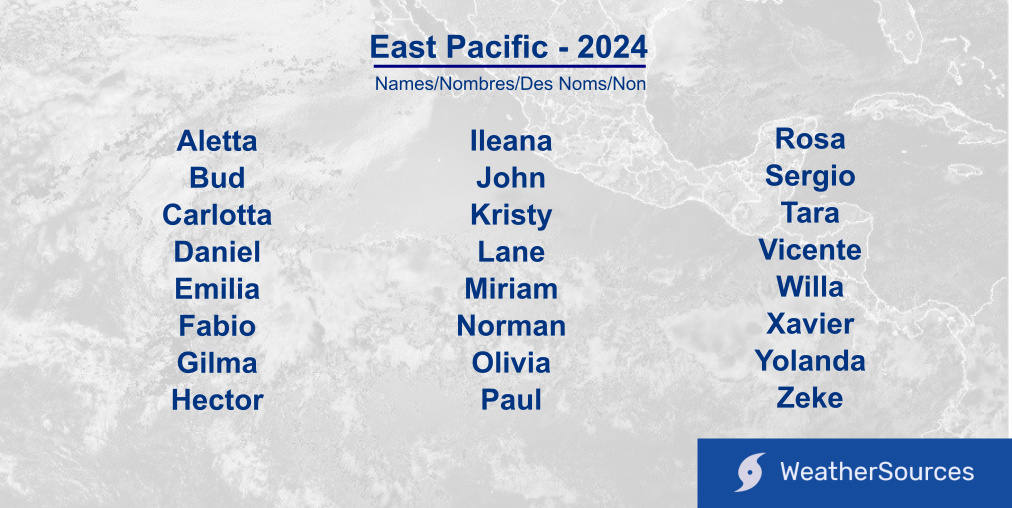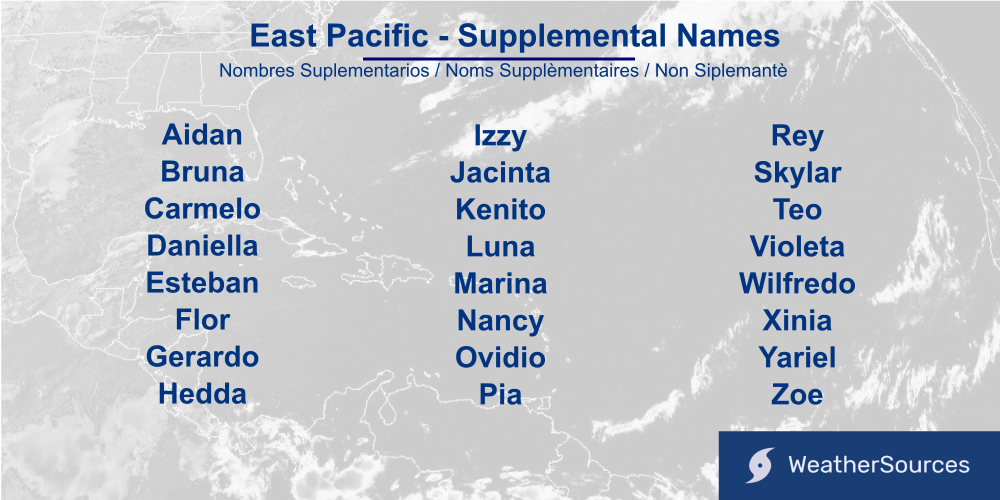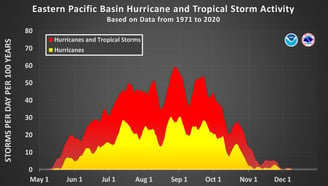
East Pacific
Pacific, North of equator from North America Westward to 140w
Area: Pacific North of the Equator from North America Westward until 140w
Basin Details
Season: 15 May - 30 November (Peak: late August, but high activity late June through early October)
Governing Body: US National Hurricane Center (NHC)
Season notes: Average season: 15 named storms, 8 hurricanes, 4 major(Cat3+)
Current Storms
Note: See below first map for specific storm data.
This image updates every six hours from 15May-30November at 5 & 11am/pmEDT(4 & 10a/pEST); 4 & 10am/pmCDT(3 & 9a/pCST); 3 & 9am/pmMDT(2 & 8a/pMST). It will also update any time as needed (ie: for a January system, etc.). Date & Time last updated located in bottom left.
Future Storms
This image updates every six hours from 15May-30November at 2 & 8am/pmEDT(1 & 7a/pEST); 1 & 7am/pmCDT(12 & 6a/pCST); 12 & 6am/pmMDT(11 & 5a/pMST). It will also update any time as needed (ie: for a January system, etc.). Date & Time last updated located in bottom left.
Next two days:
Next seven days:
(NHC moved from 5-day to 7 in 2023)
Storm Names
Storm names repeat every six years unless retired by the World Meteorological Organization (WMO). Because storms affect multiple countries, name list generated by WMO. NHC provides a list of upcoming names & pronunciation list here.


What happens if all the names area used?
In previous years the Greek alphabet was used (Alpha, Beta, Gamma, etc.). Starting in 2021 a supplemental name list will be utilized:


Averages / History


Studying the past can help you plan the future. From beach trips, shipping cargo, insurance cost, to keeping your home safe, etc. Averages are averages, so storms can fall outside of the data, dates & boundaries shown below.
Past activity shows late June through early October has high activity in the East Pacific in terms of number of named storms with late August being peak (but overall spread out as a period of higher activity).
Image credit: NHC/NOAA (Source); data 1971 to 2020.
Monthly historical tracks for the East Pacific basin from January to December. Some storms continued on to the Central Pacific.
Image credit: NHC/NOAA (Source); month text added to original image; data 1949 to 2021.
Note: Weather satellites did not exist until 1960's, some data may be missing.
Regions where more than ten named storm centers have previously passed within 173miles (150 nautical miles). Colors represent number of storms (ie: blue = between 10 and 49 storms, red =more than 150, etc.)
Image credit: NHC/NOAA (Source); data 1971 to 2020.
Note: Weather satellites did not exist until 1960's, some data may be missing.
Regions where more than ten Hurricane centers have previously passed within 173miles (150 nautical miles). Colors represent number of storms (ie: blue = between 5 and 24 storms, red =more than 75, etc.)
Image credit: NHC/NOAA (Source); data 1971 to 2020.
Note: Weather satellites did not exist until 1960's, some data may be missing.
Named storm origin points (red dots) and their tracks (thin lines). Each graphic is for a ten day period (month / days top of image). This can help show when busier times are more likely, general steering patterns that time of year, where storm formation common or uncommon, etc.
Image credit: NHC/NOAA (Source); Atlantic data 1851 to 2015, Pacific data 1949-2015.
Note: Weather satellites did not exist until 1960's, some data may be missing.